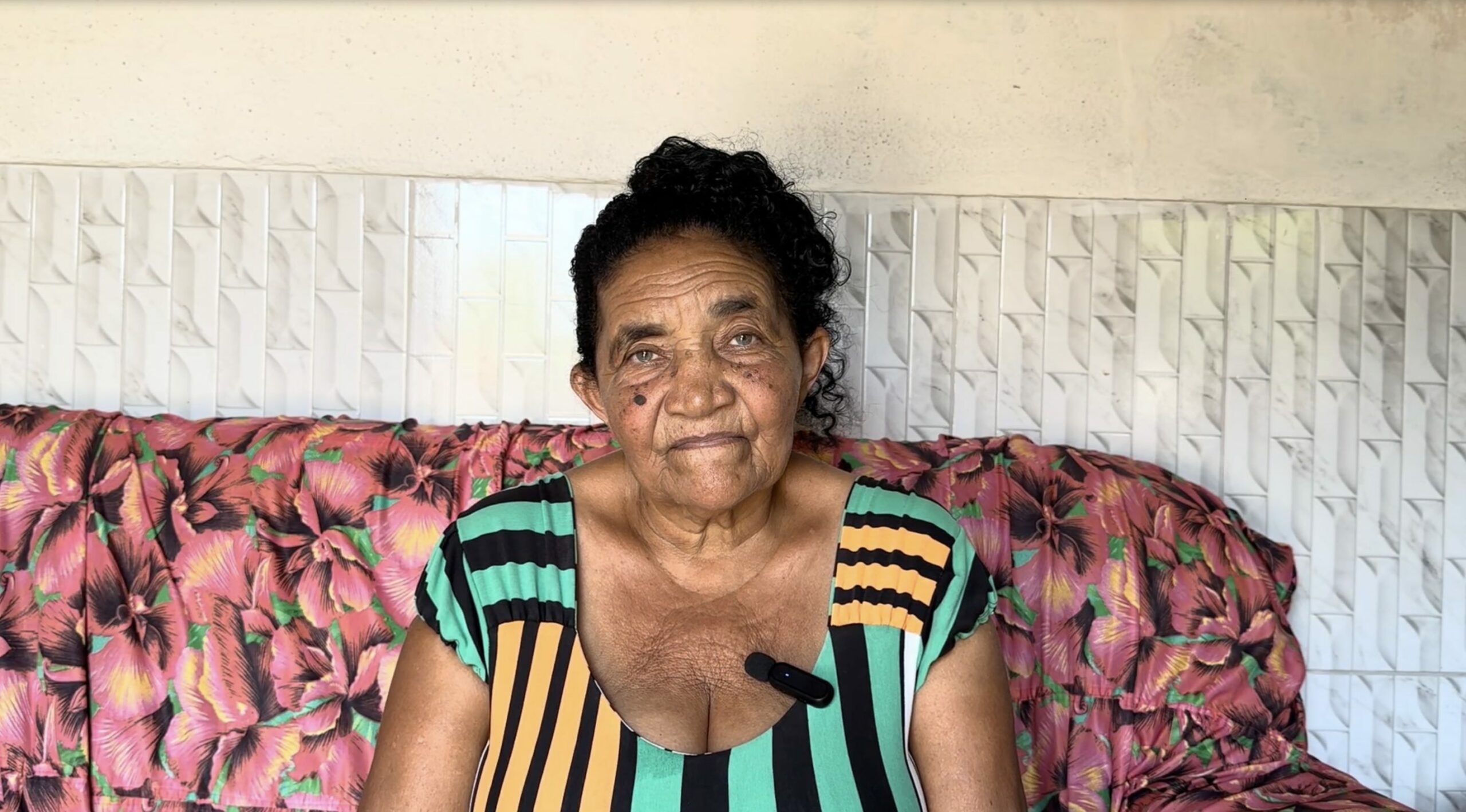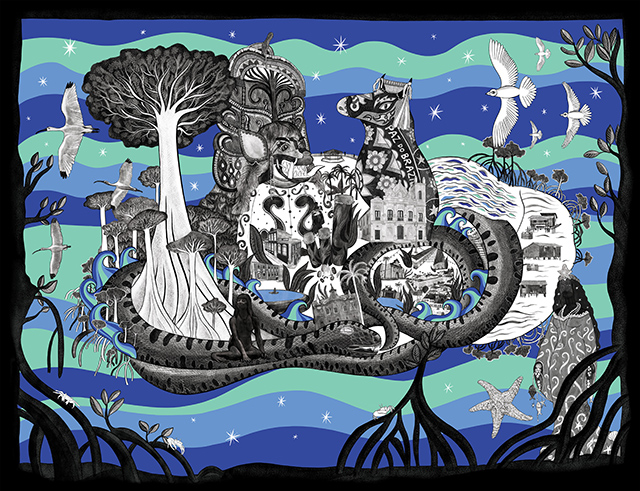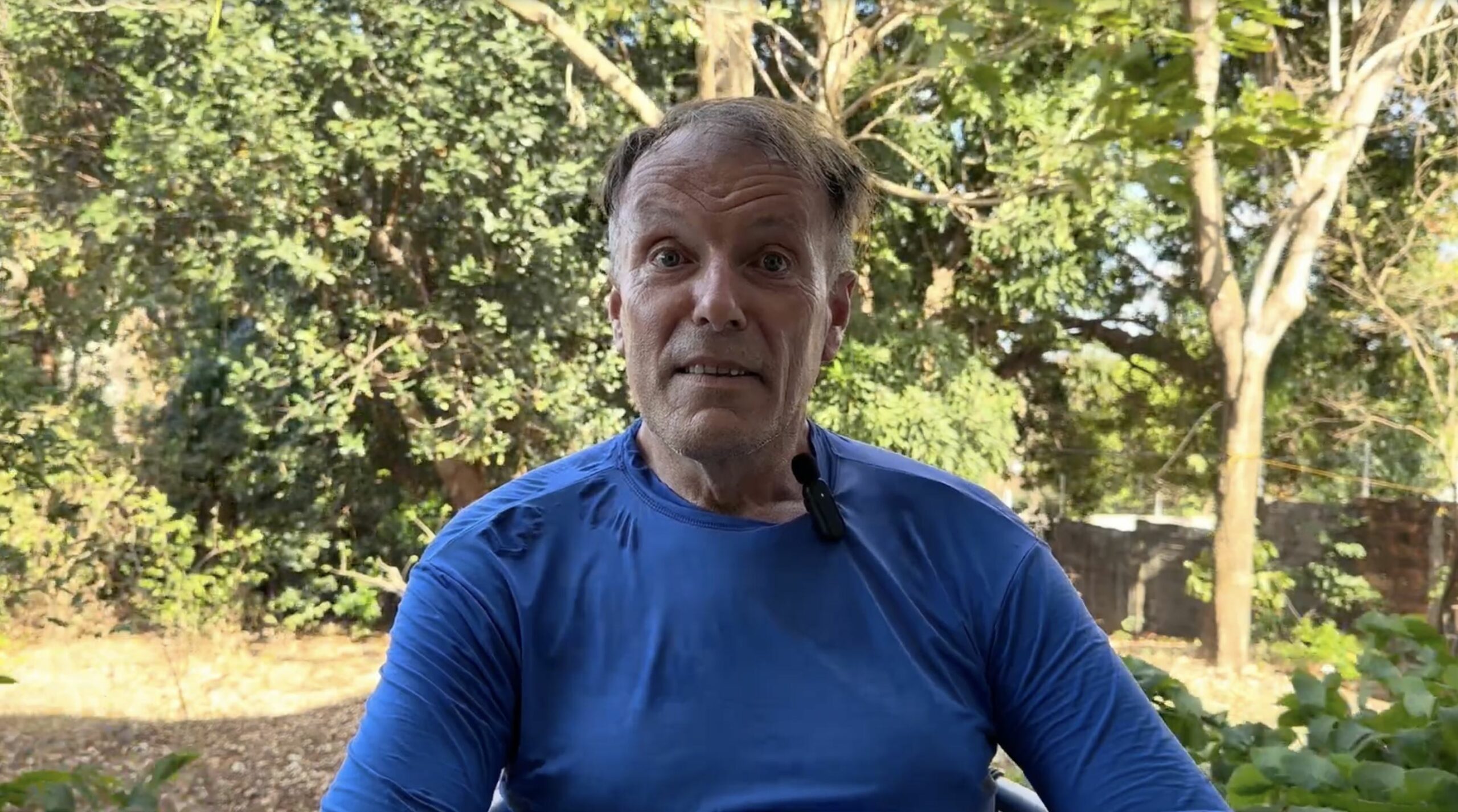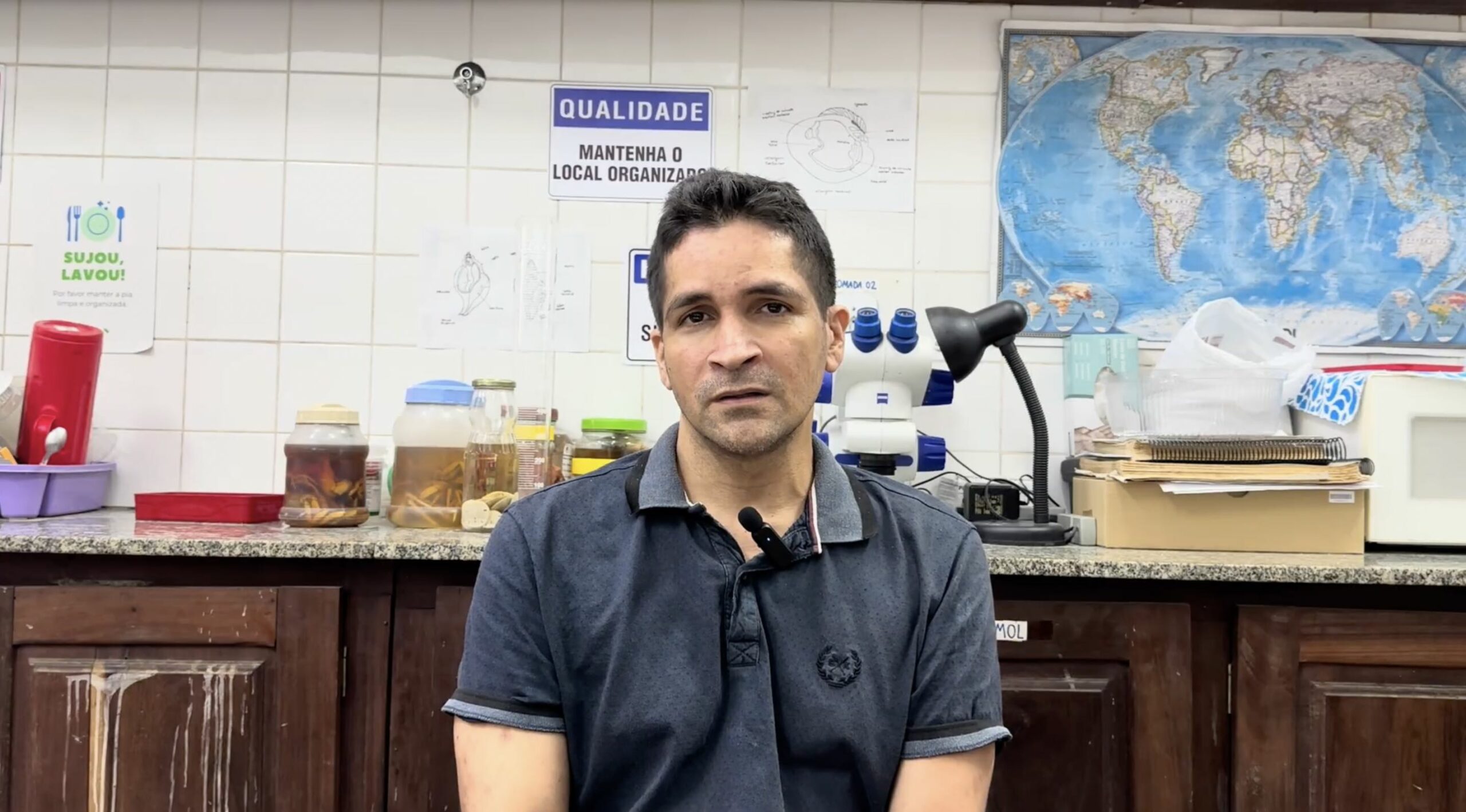
Irasci Correa Santos Vieira is 69 years old. Born and raised in her village, she devoted 32 years of her life to serving the municipality before retiring. Today, she looks after her grandchildren and continues to live in tune with the community, an active witness to its evolution.
The transformation of the river
Since childhood, Irasci has observed profound changes in the landscape and the local ecological balance.
She explains: « There are changes in the river, there are changes, many changes. ‘In the past, there were no mangroves in the area; they appeared over time as the river lost depth. ’This mangrove tree comes from the mouth of the river, so it was born there. Before, this mangrove didn’t exist. »
The change in water salinity is another striking feature. ‘The water has become saltier than before.’ This change has had a direct impact on daily life: for a long time, residents collected water from the river at high tide to drink. « We brought water from the river home and kept it in our tanks to drink for a fortnight, and we had to use it sparingly. ‘
A disruption of practices and resources
This habit of collecting water disappeared about 35 years ago due to increased salinisation and declining water quality. ’Today, it’s no longer worth it because the water here is salty, even during the rainy season. An artesian well was dug about 30 years ago, providing water that is partially usable for domestic needs. ‘It’s safe water, we use it for washing clothes and cooking, but we can’t make coffee.’
Drinking water now comes from cisterns, which have become essential.
The drop in the river level has also led to a drastic decline in aquatic biodiversity. In the past, fish were plentiful and accessible from the banks. ‘There were lots of fish here, everywhere in the river. […] This river used to be deep.’ Today, that abundance is a thing of the past.
Concern for the future
Faced with these changes, Irasci expresses deep concern for future generations. ‘I know what I’ve been through, I know what I’m going through, but I think about my children and my grandchildren.’ She notes the scarcity of fish and the lack of action by the authorities: « We could hope that our governments would do something, but no one is doing anything. «
While some residents have left the community, it is not always as a direct result of environmental degradation, but rather in the hope of a better quality of life in the city.
Memories of a changing landscape
In the rest of her testimony, Irasci describes specific geomorphological changes to the river. She remembers a time when the riverbed was winding and deep, and boats followed its natural curves. But under pressure from fishermen and small boats, these curves were gradually ‘cut’ to save time. As a result, the course of the river has been altered, the banks weakened and the depth reduced.
In the past, there was abundant aquatic wildlife: ‘There were big fish and lots of porpoises. […] When there were lots of fish, sponge fish and big fish, the porpoises would come.’ Today, these species have virtually disappeared.
Increasing pests, discreet predators
Over the years, another change has been noticeable: the evolution of the species present in the immediate environment. While caimans are now rare – ‘Alligators are only seen in the river. There are no alligators here for us now.’ – insects are proliferating.
In particular, the ‘maruim’, a tiny, almost invisible mosquito, has become ubiquitous: « There are so many that if you leave here at 5 o’clock in the morning, you won’t be able to stay outside. […] The bite hurts more than a horsefly. These insects thrive in stagnant areas where salt water rises and deposits decaying leaves.
The retreat of the sea, the advance of the mangrove
The mangrove, once absent, is advancing every year. Irasci explains this by rising water levels and saltwater intrusion: ‘The sea is coming in more and more through the river mouth […] and every time it comes in, it kills the vegetation.’ This ecological upheaval is profoundly transforming the landscape: ‘I even joke that in the future, fishermen will become crab gatherers!’
Unusual animal sightings
Irasci also recounts the surprising discovery of a large marine animal, similar to a seal, that had washed up in the area. She alerted local ecologists in an attempt to save it: « I found it. I then called the ecologists from Arari. ‘
Local adaptations: beekeeping and fish farming
Faced with dwindling fish stocks and increasing salinisation of the water, the inhabitants are developing new strategies. Beekeeping, for example, has become established in some families: ’There is bee farming. […] But I haven’t had any honey for a year because there are no flowers.‘
Fish farming is also booming, despite the difficulties associated with water: ’The fish we raise here are pacu-manteiga, tilapia, curimatã and tambatinga. ‘ But the water used is exclusively rainwater: ’Because the river water is salty, there’s no way we can use it. »
A non-native fish, the piramutaba, has also recently colonised the area: ‘It’s not a freshwater fish, but it arrived here thanks to God. […] You see a lot of them at the moment.’ However, opinions are divided: some people find its flesh unpalatable.
A daily routine reorganised around scarcity
Meals are prepared exclusively using collected rainwater. ‘The meals we make are made only with rainwater. […] It’s a gift from heaven.’
Testimonies from the same panel


